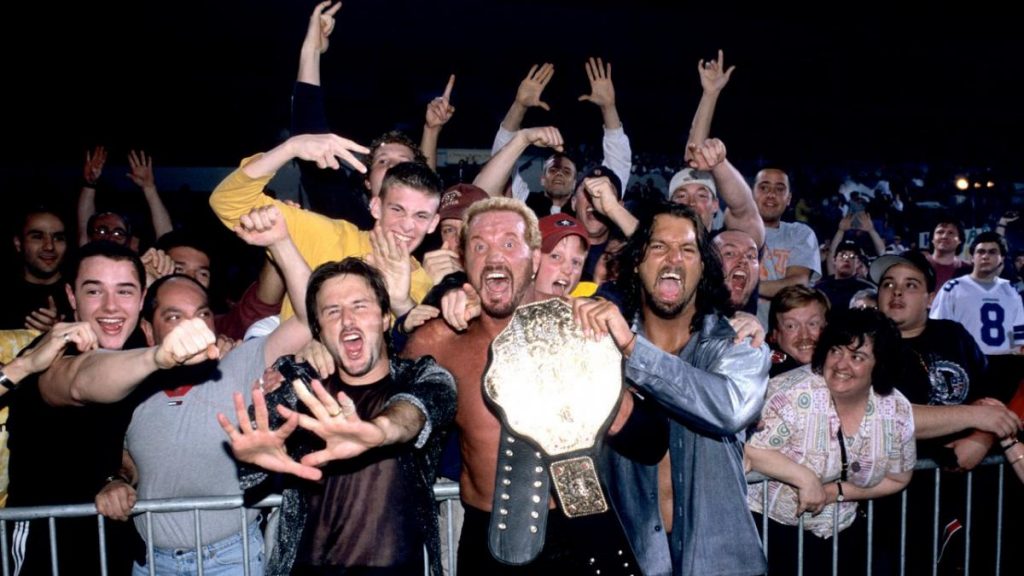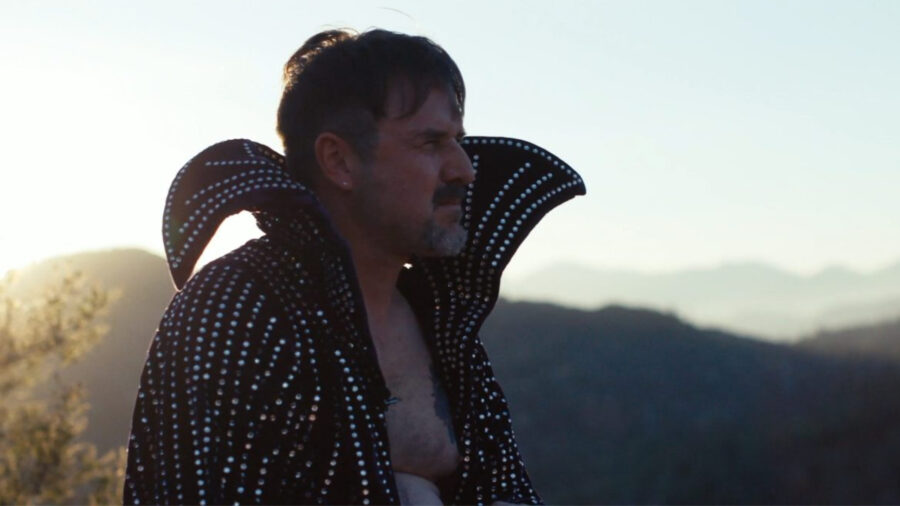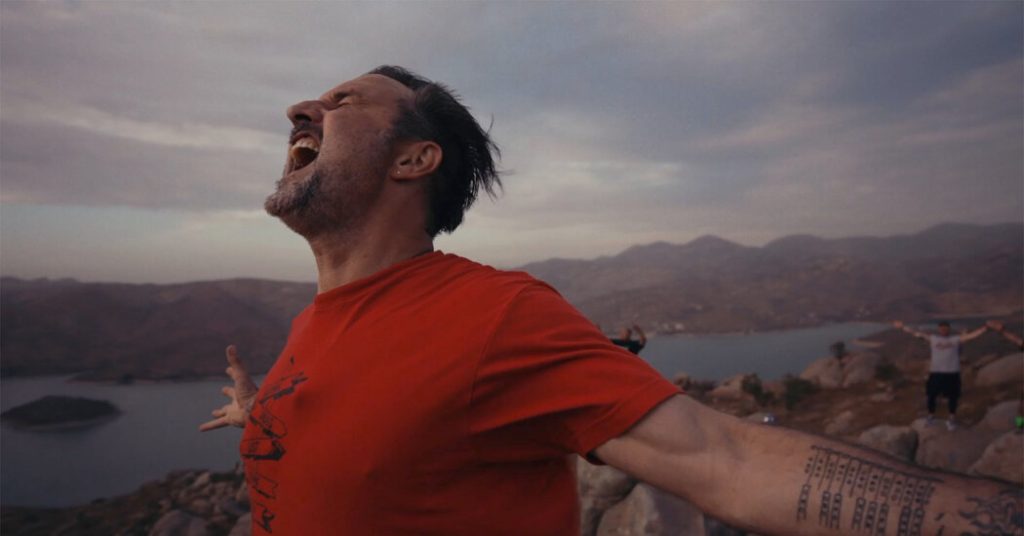Review: You Cannot Kill David Arquette
To say that watching ‘You Cannot Kill David Arquette’ was an uncomfortable experience is a massive and borderline irresponsible understatement. As a matter of fact, two thirds of the way through this documentary chronicling Arquette’s quest for redemption in the eyes of wrestling fans, I paused the movie to send a message to Bodyslam.net news editor Chris Deez.
I wrote: “I feel complicit in the self-harm of a mentally ill man by watching this.”
Truth be told, I still do.
To explain why, spoilers follow.

There were moments where I truly feared for the physical and mental health of the 48-year-old actor. Yes, it’s the story of a man who was handed the WCW World Heavyweight Championship thanks to an angle crafted by Vince Russo back in 2000 – one that spun out of and tied into the wrestling-themed Arquette movie Ready To Rumble. Yes, it’s the tale of that same man who, 20 years on, is still seeking some semblance of respect from the fans who responded so negatively to his two-week title reign.
Yet it’s also the story of a life-long wrestling fan – one still dealing with the effects of an often painful and unconventional childhood. Archive footage shows David’s sisters Patricia and Rosanna recalling physical abuse at the hands of their mother – including being choked to the point of unconsciousness – while the family lived in an off the grid commune with no running water or electricity. It’s against this backdrop that Arquette found his love of – and perhaps escape into – the world of wrestling.
It’s an exploration of how an unexpected and tenuous link to wrestling via his paternal relationship strengthened this attraction, as we learn that David’s dad, Lewis Arquette, provided the voice of Jimmy Superfly Snuka on, of all things, the Hulk Hogan Rock n’ Wrestling cartoon.
It’s the story of a man who has struggled with his mental health, with addiction, with his physical wellbeing, with the aftermath of a heart attack… and the knowledge that he was near universally hated by many in the sport that he loved.
“I don’t really care about being a champ or anything like that. I care about respect,” Arquette explains. That single-mindedness is screamingly apparent throughout the documentary, but there’s countless times where I found myself wondering if seeking out that respect was worth the sacrifice it took to try and find it.
It’s a brutally honest film, so much so that it veers close to the point of feeling exploitative. Arquette – an actor with a net worth of approximately $29m – is shown vomiting into a cardboard box before returning to a quiet wrestling convention signing desk. He’s seen getting a back, sack and crack body wax ahead of an upcoming wrestling match. We watch as he is strikes wrestling poses through a spray tan application, all while wearing nothing but a blue modesty pouch that barely covers his genitals – then having to shower it all off when he’s reminded that his shoddily applied glow will ruin the continuity when he returns to a movie set. In a scripted comedy, I’d laugh. In a fly on the wall documentary, I wince.

“I’m just kinda sick of being a joke, to be honest with you,” narrates David. An undeniably honest sentiment, but one that’s taken to levels of farce when it’s juxtaposed with a shirtless Arquette, middle aged spread on display, sitting astride a horse, sucking on a vape pipe as the California sunlight glints off the jewels of the bedazzled wizards cape he wears. It’s times like this that you have to wonder if you’re watching a genuine documentary or the wrestling world’s version of Spinal Tap.
It’s an undeniably bizarre moment, but perhaps the most bizarre thing about You Cannot Kill David Arquette is that it’s eclipsed by more and more surreal scenes as the story unfolds.
“If you’re part of the joke, it’s not as painful as if you are the joke,” he says. I found myself wondering which of the two he actually is in this documentary – was he complicit in being the former, or did he unwillingly or unwittingly find himself becoming the latter? I hope it’s the first. I really, really do. Yet as I write this review, I still don’t know.
Indeed, just to hammer the point home, we hear commentary on Arquette’s physiology from a psychiatrist treating him. “His brain isn’t connected in a typical way,” explains the actor’s neurologist. We even watch as Arquette swings from manic, to calm, to aggressive and to subdued while nurses pump syringe after syringe of ketamine and other drugs into his body as treatment for anxiety and depression.
And then things get really crazy.
We watch as he accepts an indie booking from a wrestling promotion that attracts no audience, results in no pay and leaves him with little more than countless lacerations and puncture wounds to the body. We follow him as he travels to Tijuana, gets a street tattoo of Luchador legend El Santo (it sits on his right arm underneath a black and grey tattoo of Macho Man Randy Savage and Miss Elizabeth) and participates in street wrestling – where masked luchadors tell mini wrestling stories at busy intersections, performing in front of queuing traffic and going car to car to collect money, all before traffic lights turn green.
We see Arquette pay his dues in a Mexican wrestling ring, at an arena where the resident Mariachi band provides around a quarter of the audience for the show.
We hear the titular star calmly explain that he has to pop to see his doctor to determine if he’s suffering from wrestling-related internal bleeding. We watch him ironing out an absolute shiner of a black eye that leaves one side of his face horribly swollen. Most disturbingly of all, and in a genuinely shocking moment, we watch as Arquette suffer a dangerous neck injury thanks to a deathmatch gone wrong, and learn once and for all that taking a broken fluorescent light tube to the jugular vein is really not a good idea.
“Don’t try this at home” has never sounded more screamingly obvious.
Ultimately, the story climaxes as it begins – at a Legends of Wrestling event. At the start of the documentary, Arquette is pitching a guest appearance to organizer Brian Knobbs at the 2018 iteration of the event which doesn’t exactly go according to plan. At the end, we follow Arquette as he hopes to step into the ring at the March 2019 show to face off against Ken Anderson. Yet the Arquette we see at the closing of this story is a different man to the one we meet at the beginning and it really is the story of the journey between these two chapters. It’s about redemption, it’s about hope, it’s about hopelessness, it’s about desperation and it’s about pride.

Sure, you can watch this documentary and play spot the wrestling star. There’s plenty of cameos to pick up along the way, from long-established figures like Knobbs, Billy Gunn, Ric Flair, DDP, Scott Hall and Eric Bischoff through to younger wrestlers like Peter Avalon, Jungle Boy, RJ City and Tyler Bateman.
You can see it as a tale of borderline obsession, of one man’s need to right a perceived wrong. You can view it as a fly on the wall documenting of an adventure that teetered close to absolute disaster… but somehow just managed to back away from the edge at the last minute. In my eyes, it’s a rites of passage story where the price of making it out the other side was almost too high and too dangerous to pay – one that perhaps might not have even happened if it wasn’t for the presence of the cameras. However you chose to view it, You Cannot Kill David Arquette is an arresting, disturbing and intimate story.
I now know more about the man than I did before watching. He’s gone from being a footnote in the history of wrestling to a far more rounded, fascinating figure. I didn’t view him with any level of hatred or venom as some fans did, so I’m not sure he needed to win my respect or some kind of redemption, but I admire his dedication, his single-mindedness and his perseverance in the face of overwhelming obstacles. Moreover, finding out what he did with every cent made as a result of his run in WCW will probably change the perspective of many on whether or not any good really did come from his name being etched on the list of former champs. His story is one I certainly don’t regret watching. I’m happy he finds the closure that he does – but I’m unsure if I’ll be ready to revisit it any time soon.
